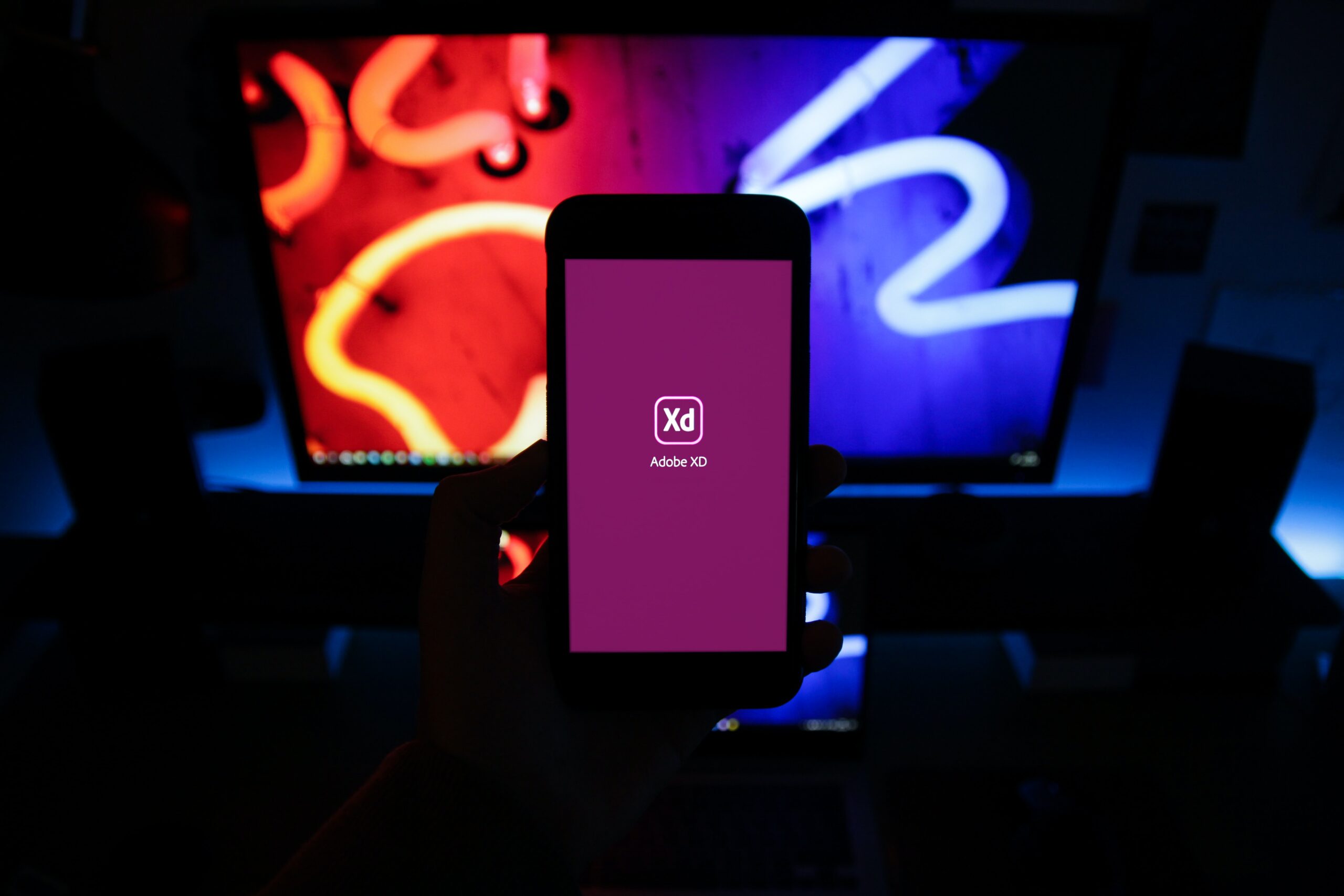It will not have escaped anyone’s notice, websites and mobile applications have continued to multiply in recent years. To such an extent that it has become almost indispensable for a company to ensure its presence on the web even if it has no direct link with the digital world and even if the latter is not strictly speaking a distribution channel for its products or services. A website is at the very least a means of presenting its structure and maintaining a permanent link with its customers. For professionals who have the possibility to distribute their products online or those who offer a service more or less directly related to digital, it may even be interesting to extend its impact with its customers through a mobile application, thus improving the proximity with them.
However, developing a website and a mobile application are not necessarily part of the areas of expertise of all companies that would need them. This is why professionals exist, including design agencies for example, to help all those who would need to develop such a project. But whether you are an agency that must respect the wishes of its client or whether you wish to work through such an agency to carry out your project, you will in any case have to go through the design and development of a prototype that will, if necessary, be validated by decision-makers. It is often the same in an important structure with a dedicated department. The important thing is to speed up these phases in order to ensure maximum time savings and an excellent level of responsiveness. So, if we can design a mock-up of a website or mobile application that will closely resemble the final project without having to create a line of code or hire the services of a developer, it should be able to meet these requirements. Let’s see what Adobe XD offers…
Steps in the design of a web or mobile project
Before discussing where Adobe XD can be of use to anyone who wants to quickly design the user interface and user interactions in a web or mobile project, let’s look at the steps involved in designing a web or mobile project. In fact, there are two main stages: design and prototyping. We will deliberately omit here to detail the last one, the development phase, which is not part of the features offered by Adobe XD. We can nevertheless specify that it consists in designing the code of the website or application in order to ensure, for example, the exchanges with a database, the entire logical operation and to proceed with the integration of visuals and animations that link them in order to generate a finished product that it will be possible to put online and distribute.
But let’s get back to our first two phases… First of all, design consists of conceiving the graphic interface of the project in which the images, logos, inserts or buttons will be found, while keeping in mind the objective of offering an optimal user experience (see our article UX Design for more information). This is when the interface components are designed and placed on each page.
Then, once we have designed all the views of our website or application, it is important to define and set up the links that link them together. In other words, define what the first page will be, through which interactions it is possible to access the other views and, possibly, what the transitions between each of them will look like, especially for mobile applications. This phase is called prototyping. The idea here is to be able to present to a client or a dedicated department in an organization a functional project, extremely close to the final rendering, without having to carry out the development, thus allowing the designers to be able to make the model themselves more quickly and, above all, to be able to make changes more quickly based on the remarks gathered during the project presentations.
So what is Adobe XD ?
As you may have guessed, Adobe XD is a tool for designing and prototyping websites and web and mobile applications. It is intended to be the first tool used during the development of a project of this type so that it can be presented even before starting the development that will lead to a distribution. Adobe XD is particularly recommended for creating wireframes, icons, or graphic components and allows you to embed menus, dialog boxes, or virtual keyboards so that your designs are as close as possible to the final rendering. It allows you to simulate touch screen interaction, keyboard input and voice commands.
Adobe XD is available for your computer, whether it’s running Windows or macOS, and is part of the Adobe Creative Cloud suite of software (see the Adobe Creative Cloud Suite article for more information). It’s also available as a standalone product in two different versions that allow you to design an unlimited number of projects, take advantage of unlimited sharing capabilities, and each with 100 GB of cloud storage. The second version, dedicated to larger organizations, offers technical support and tools to help you get started. With Adobe XD, you get a non-destructive workflow for your projects, which means you can take advantage of an automatic save feature with retention of past backups, allowing you to retrieve an earlier version of your project whenever you want. You can do this directly in the Cloud and update your work there.
Adobe XD could be presented like this… it is a simplified version of an image processing and design software like Adobe Photoshop or Adobe Illustrator. It works perfectly with them, offering you the possibility of importing visuals that you have worked on with Adobe Photoshop but also to modify them from Adobe Photoshop and make sure that the changes are applied to your project developed on Adobe XD. On the other hand, it differs from Photoshop or Illustrator by a simplified interface offering you only the tools you need to design your site or application.
How does project development work in Adobe XD ?
Let’s take things in order… When you open your software, you’re presented with a screen that lets you choose from a variety of different visual formats. For example, you can choose a screen format that corresponds to that of a computer for a web project or a tablet or smartphone format for a mobile project. Once this is done you enter the software interface. You can then start working on your design. There you will find the most common tools including the integration of simple shapes such as a rectangle for example to position a header or a search bar. But Adobe XD is much more than that, including the ability to directly choose a color palette based on your graphic design. As soon as your colors are chosen, all you have to do is select them to assign them to your graphic elements. And the advantage here is considerable since not only can you very quickly integrate your colors into your design, but if you later decide to delete one of them and replace it with another one, this will automatically result in the replacement of this color by the new one on all your views. If you need help to arrange your elements with great precision you can set up a grid. By choosing the margins, the number of rows or the number of columns, aligning design elements becomes child’s play.
Do you want to be able to easily duplicate graphic elements ? No problem. With the repetition grid tool for an object, you can easily duplicate it as many times as you want, vertically or horizontally, by choosing the margin that will separate each of these copies. You will then be able to make changes only once, since they will automatically be reflected in all your copies, guaranteeing you perfect consistency in your design and, above all, considerable time savings. Inserting images is also simplified since the software allows you to adapt their size according to the space available in a widget, a shape or an insert for example. Also in terms of design, Adobe XD offers you the possibility of making certain design elements such as a menu bar fixed, even when your page allows the user to scroll through the content, always with a view to optimal visual rendering before development. The content-based layout feature also makes your life easier by taking into account graphic components and the relationships between them so that you can always make adjustments that maintain proportions with each change you make. You can resize to adapt your design to different screen sizes, for example, with a minimum number of manipulations. Once you’ve finished a view, Adobe XD lets you duplicate it or create a new one from scratch for future designs.
And when we’ve finished designing all the views for our project, how can we make them look realistic ? Once again, Adobe XD does just that by allowing you to create links between each of your views. You can make an entire view or, on the contrary, a single element clickable and define a link that will take you directly to the view of your choice as a result of this interaction. Other customization tools are then available to you, such as the possibility to choose the action that will trigger the page change but also the type of transition. For example, a fade transition triggered by a press or a click on a button. But Adobe XD can also, depending on your work plans, automatically generate optimized animations, for example when they are not of the same size. You can also take the level of customization of these animations even further by exporting a project to and editing it directly in Adobe After Effects motion design software. If you want your graphic elements to change their appearance when interacting with your users, you can also predict this, for example, by changing the opacity of a button when it is clicked.
Get an overview of some of the features we’ve discussed by watching the video below…
But once our prototyping is finished, wouldn’t it be better to test our mobile application on… mobile ? Of course ! And that’s why Adobe XD is available for your smartphones and tablets with Android or iOS. The application allows you to open a project from your mobile device and test it directly on your mobile device to evaluate it or have it rendered. This way, you can test your application in real conditions.
Finally, what distinguishes Adobe XD is its sharing and integration features. In particular, it integrates with Microsoft Teams (see our Microsoft Teams article for more information) and allows the integration of a wide range of fonts thanks to Adobe Fonts. Sharing capabilities allow you to make a project available to multiple people without having them working from the same location. But in addition to sharing it with designers for modification, you can also submit it to developers for review and access to resources, design specifications, and CSS code that can be directly integrated into the final project code. You will also be able to generate links to your project to allow whoever you want to access it. Adobe XD also allows you to control the rights of each person to modify or add comments to your project.
Adobe XD is certainly an extremely useful design tool for anyone who wants to launch a site or application project and quickly make it real so that you can present, share, and improve it before you need to do time-consuming and expensive development work.









BWER Company stands as a trusted name in Iraq’s weighbridge industry, offering innovative designs, reliable installations, and comprehensive support for all weighing requirements.
Thank you for your sharing. I am worried that I lack creative ideas. It is your article that makes me full of hope. Thank you. But, I have a question, can you help me?
Thanks for sharing. I read many of your blog posts, cool, your blog is very good.
Thanks for sharing. I read many of your blog posts, cool, your blog is very good. https://accounts.binance.com/ru/register?ref=V3MG69RO
Your point of view caught my eye and was very interesting. Thanks. I have a question for you.
Thank you very much for sharing, I learned a lot from your article. Very cool. Thanks. nimabi